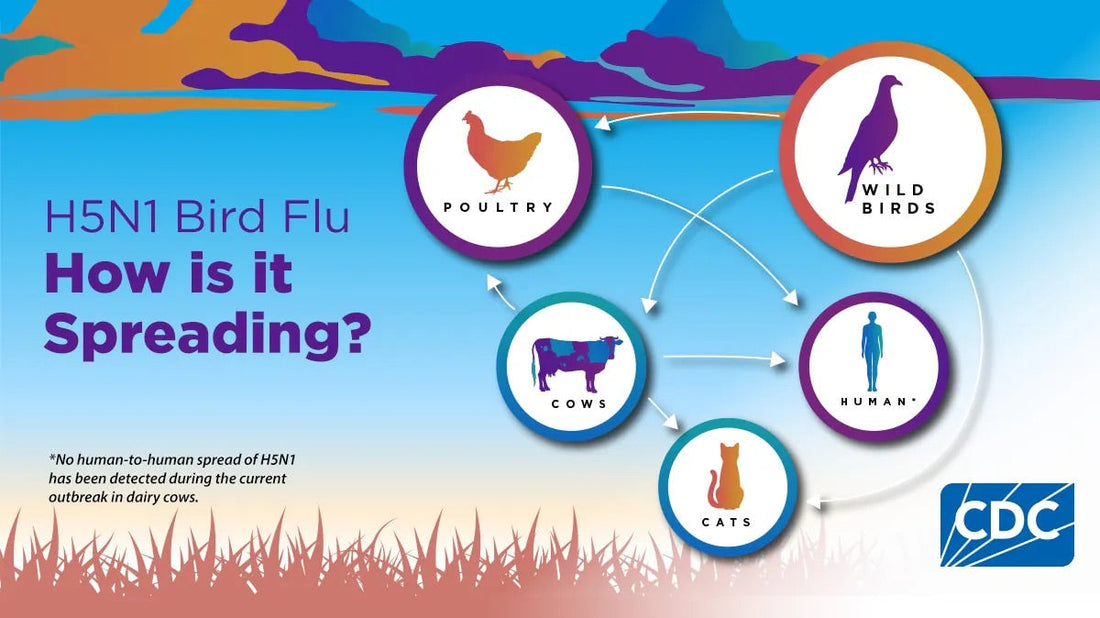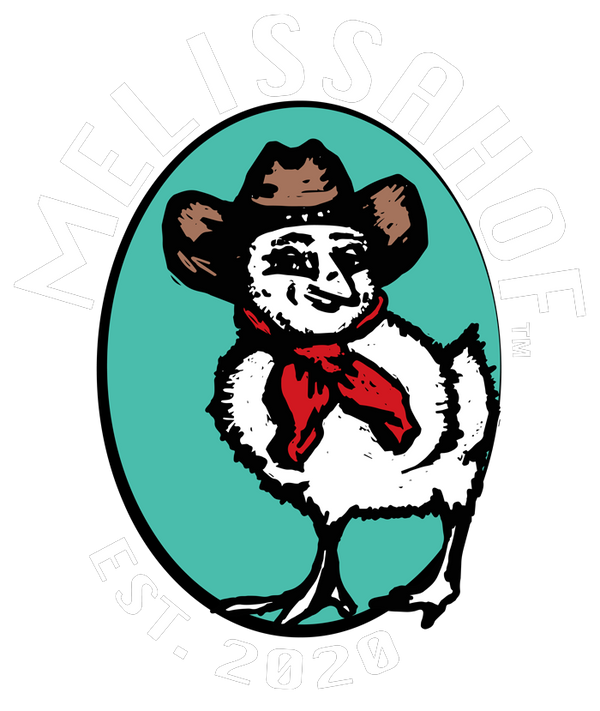
Say No to the Bird Flu
Share
Sporadic outbreaks of the bird flu continues in US poultry flocks.
H5 bird flu is widespread in wild birds worldwide and is causing outbreaks in poultry and U.S. dairy cows with several recent human cases in U.S. dairy and poultry workers.
While the current public health risk is low, Center for Disease Control (CDC) is watching the situation carefully and working with states to monitor people with animal exposures.
More details on the CDC avian influenza website.
How to Protect Yourself & Your Flock
Your chickens can be infected with avian influenza, aka bird flu, from wild birds such as sparrows, pigeons and starlings. To minimize your chickens contact with wild birds, use feeders and waterers that do not allow pest birds to access feed and water alongside your flock.
Nipple Waterer
To maintain clean drinking water, and promote optimal health, Melissahof utilizes nipple waterers. They are hung from the ceiling to maximize floor space inside of the coops. The enclosed waterers—buckets with tight-fitting lids—prevent the chickens from kicking bedding and manure into their drinking water. This design also reduces wild birds from entering the coops, and carrying disease such as coccidiosis and avian influenza, because they cannot operate the nipples to drink. The waterer models used on Melissahof are insulated with interior heating elements to thaw water in the winter. The power cords detach for the waterers’ use in the warm season.
Treadle Feeder
The main pest birds that previously infested Melissahof coops are the non-native European starlings, which are classed as an invasive species in the US. Primarily, they entered the coops to eat the chicken feed. In addition to the avian disease they spread, the starlings’ appetite also increased the Melissahof feed bill. To solve this problem, all of the adult poultry flocks were switched over to treadle feeders. Chickens quickly learn to stand on the treadle to open the feeder’s door to access the feed inside. Starlings, and rodents such as mice and rats, are not heavy enough to operate the treadle.
Keep Coops Ventilated
Avian influenza can be respiratorily transmitted between birds. Coop ventilation, even in winter, prevents moisture condensation and poor air quality due to ammonia. Additionally, high moisture in cold weather can cause frostbite.
You can:
- Partially open a south-facing window.
- Install roof vents to allow moisture and stale air to naturally leave the coop.
- Open a door or window on warm, calm days.
Pro Tip: Melissahof coops are designed according to Woods' Fresh-air Poultry House principles.
Scoop the Poop
Chicken manure is 70% water. Regularly clean out manure and change soiled bedding to lower moisture, and ammonia, inside the coop. When daytime temperatures do not rise above freezing for weeks, which freezes manure solid, layer fresh dry bedding on top until there's a thaw when you can scoop out the whole lot.
Pro Tip: Ask your local cabinetmaker if you can pick up their sawdust waste for use as poultry bedding. This is an affordable, and eco-friendly, way to source bedding. Then, after you clean out your coop, compost the sawdust and chicken manure mixture to use as fertilizer in your garden.

